Wastewater treatment is a growing concern for industries and municipalities aiming to reuse water efficiently. Integrating wastewater into systems that use ultrafiltration (UF) and reverse osmosis (RO) can help achieve higher water purity levels. Here, we provide practical tips for optimizing this process.
Understanding Ultrafiltration and Reverse Osmosis
Ultrafiltration (UF) is a membrane filtration process that removes particles, bacteria, and high-molecular-weight substances. Reverse Osmosis (RO), on the other hand, is used to remove smaller molecules, ions, and salts, making it effective for desalination and purification.
Combining UF and RO offers significant advantages. UF acts as a pre-treatment step, removing larger particles and organic matter before the water goes through RO. This pre-filtration ensures that RO membranes operate efficiently, prolonging their lifespan and enhancing overall system performance.
Key Considerations When Integrating Wastewater
- Pre-treatment is Essential: Wastewater often contains large particles, oil, and biological contaminants that can clog membranes and reduce efficiency. Implementing an effective pre-treatment, such as coagulation and sedimentation, can remove these impurities and improve the performance of UF membranes.
- Monitoring Fouling and Cleaning Protocols: Membrane fouling is a common challenge. Regular monitoring and scheduled cleaning protocols prevent build-up, keeping the system running smoothly. Chemical cleaning and backwashing are effective methods for maintaining membrane performance.
- Adjusting Pressure and Flow Rates: UF and RO membranes work best within certain pressure and flow rate parameters. Ensure that operating conditions are optimized to prevent damage and maintain efficient filtration. For example, UF membranes typically operate at pressures between 0.5–3 bar, while RO systems often require pressures of 10–30 bar.
- pH and Temperature Control: Wastewater characteristics can vary widely, affecting membrane performance. Maintaining a stable pH and temperature can help keep the system performing consistently. For UF, a pH range of 3–11 is generally safe, whereas RO systems often require pH levels between 4–11.
Benefits of UF and RO Integration
Integrating UF and RO provides several benefits:
- Enhanced Water Quality: The combination effectively removes both large and small contaminants, producing high-purity water suitable for various industrial and municipal uses.
- Cost Savings: Proper pre-treatment reduces the frequency of membrane replacements and maintenance, lowering overall operational costs.
- Sustainability: Reusing treated wastewater conserves water resources and supports eco-friendly practices.
Data for Better Decision-Making
The following table summarizes key data points for integrating UF and RO into wastewater treatment systems:
| Parameter | UF Membrane | RO Membrane |
|---|---|---|
| Pressure Range | 0.5–3 bar | 10–30 bar |
| pH Range | 3–11 | 4–11 |
| Typical Feed Size | >0.01 µm | 0.0001–1 µm |
| Efficiency | >90% removal of solids | >95% removal of dissolved salts |
Conclusion
Integrating wastewater treatment systems with UF and RO offers a reliable method for producing high-quality water. By paying attention to pre-treatment, fouling management, and operational parameters, industries and municipalities can achieve sustainable water use while optimizing their resources. Following these guidelines will ensure systems run efficiently and remain cost-effective over time.

 MBR Membrane
MBR Membrane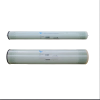 Reverse Osmosis Membrane
Reverse Osmosis Membrane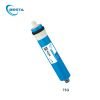 Residential Ro Membrane
Residential Ro Membrane UF Membrane
UF Membrane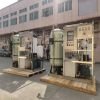 Water Treatment Plant
Water Treatment Plant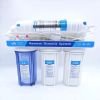 Residential Ro Machine
Residential Ro Machine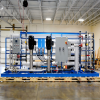 Brackish Ro System
Brackish Ro System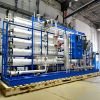 Sea water system/SW RO plant
Sea water system/SW RO plant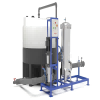 Membrane Cleaning System(CIP)
Membrane Cleaning System(CIP)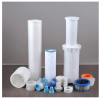 Consumables Accessories
Consumables Accessories
